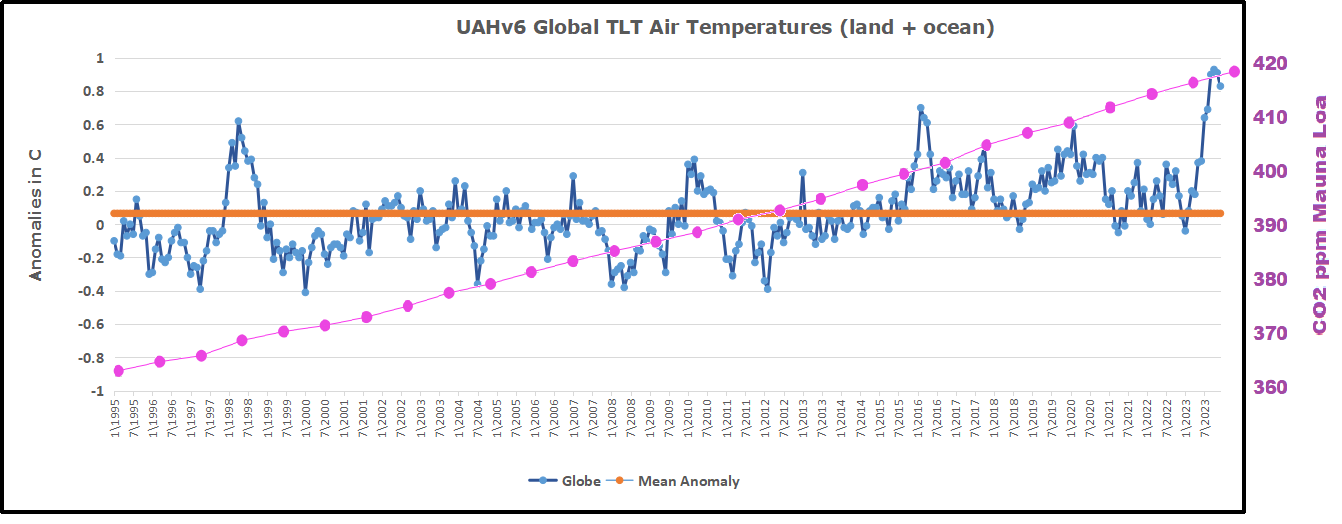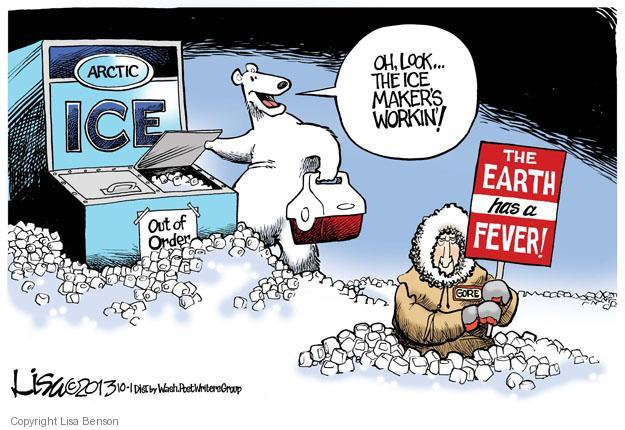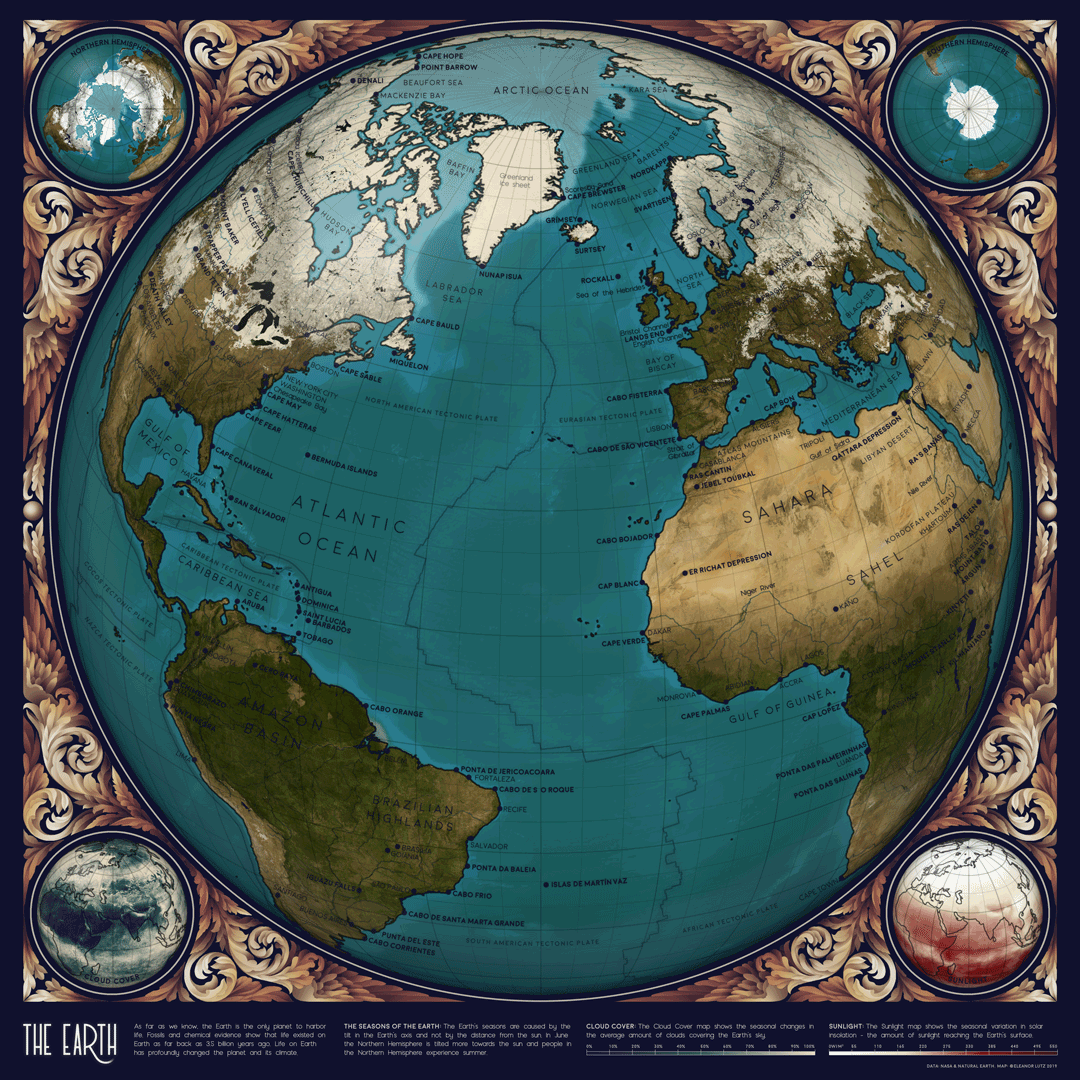The animation shows Arctic ice melting season picking up first half of April 2024. Typically, the Pacific side goes to water first, this year Okhotsk (top left) is ahead of schedule. Also Baffin Bay (bottom right) is opening up early. Elsewhere Arctic drift ice remains, and Barents Sea ice (top center) is well above average for mid April.
The graph below shows mid-March to mid-April daily ice extents for 2024 compared to 18 year averages, and some years of note.
The black line shows on average Arctic ice extents decline from a maximum near 14.9M km2 on day 76 down to ~14.1M Km2 by day 105. Exceptionally 2024 started with 15.1M km2 and exceeded the 18-year average throughout. SII was somewhat lower than MASIE in most of April until ending nearly the same. Both 2021 melted faster than average, while 2006 ice started and ended much in deficit.
Why is this important? All the claims of global climate emergency depend on dangerously higher temperatures, lower sea ice, and rising sea levels. The lack of additional warming prior to 2023 El Nino is documented in a post UAH February 2024: SH Saves Global Warming. 
The lack of acceleration in sea levels along coastlines has been discussed also. See USCS Warnings of Coastal Flooding
Also, a longer term perspective is informative:
 The table below shows the distribution of Sea Ice on day 105 across the Arctic Regions, on average, this year and 2006.
The table below shows the distribution of Sea Ice on day 105 across the Arctic Regions, on average, this year and 2006.
| Region | 2024105 | Day 105 Ave | 2024-Ave. | 2006105 | 2024-2006 |
| (0) Northern_Hemisphere | 14244041 | 14119733 | 124309 | 13589226 | 654815 |
| (1) Beaufort_Sea | 1070983 | 1069820 | 1163 | 1068683 | 2301 |
| (2) Chukchi_Sea | 966006 | 964681 | 1325 | 965591 | 415 |
| (3) East_Siberian_Sea | 1087137 | 1085571 | 1567 | 1083591 | 3546 |
| (4) Laptev_Sea | 897845 | 893528 | 4316 | 896528 | 1317 |
| (5) Kara_Sea | 935023 | 922957 | 12066 | 912379 | 22645 |
| (6) Barents_Sea | 856908 | 608844 | 248064 | 495112 | 361796 |
| (7) Greenland_Sea | 802111 | 653203 | 148908 | 599062 | 203049 |
| (8) Baffin_Bay_Gulf_of_St._Lawrence | 1179443 | 1279861 | -100418 | 1042266 | 137178 |
| (9) Canadian_Archipelago | 854860 | 852951 | 1909 | 851056 | 3804 |
| (10) Hudson_Bay | 1231701 | 1247129 | -15428 | 1235951 | -4250 |
| (11) Central_Arctic | 3247180 | 3233303 | 13877 | 3168930 | 78250 |
| (12) Bering_Sea | 639179 | 647219 | -8040 | 667951 | -28772 |
| (13) Baltic_Sea | 31107 | 44493 | -13386 | 84568 | -53461 |
| (14) Sea_of_Okhotsk | 442660 | 610735 | -168075 | 507143 | -64483 |
The overall surplus to average is 124k km2, (1%). The only major deficits are in Baffin Bay and in Sea of Okhotsk, the latter going to open water quite early. Those are more than offset by surpluses everywhere, especially in Barents and Greenland seas. In fact, Barents is 120% of its 2023 maximum.


Illustration by Eleanor Lutz shows Earth’s seasonal climate changes. If played in full screen, the four corners present views from top, bottom and sides. It is a visual representation of scientific datasets measuring Arctic ice extents.

There is no charge for content on this site, nor for subscribers to receive email notifications of postings.

